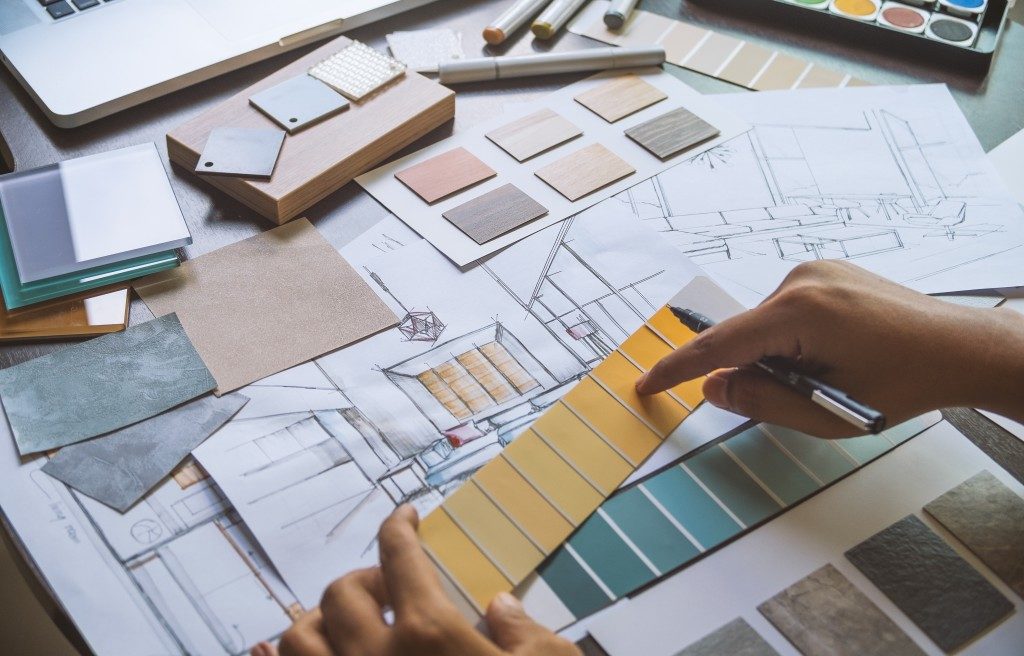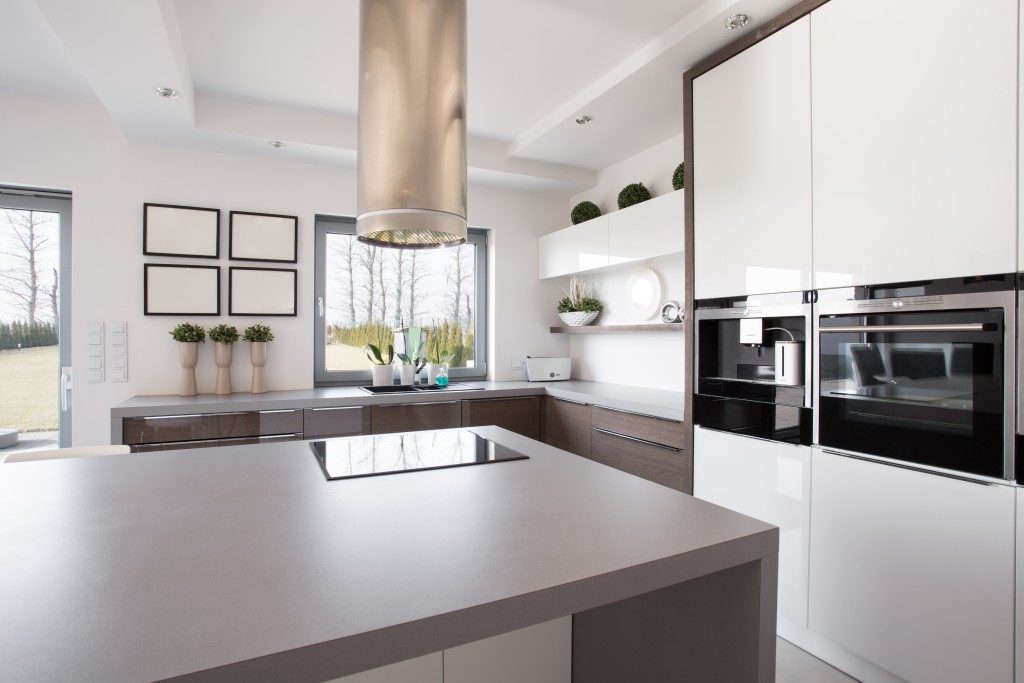Homeowners love to remodel bathrooms, and it’s easy to understand why. The room has a singular purpose, making planning and executing the project easier. There’s also less space to work with than in the kitchen or living room so you can spend less on paint, tile flooring, and other construction costs.
If you are thinking of remodeling your bathroom, you can make life easier if you hire a plumber. But if you brush up on construction basics and know what to expect, you might successfully pull off a remodel project with little outside help.

With all that said, a bathroom remodel can seem overwhelming, especially if you lack the necessary knowledge to execute a project of this type. These pointers will help you rebuild your bathroom more systematically.
- 1. Set Your Budget
- 2. Plan Your Bathroom Design
- 3. Hire a Professional Bathroom Contractor
- 4. Bathroom Layout Considerations
- 5. Plumbing Requirements
- 6. Electrical Requirements
- 7. Bathroom Ventilation System
- 8. Waterproofing and Moisture Protection
- 9. Choose Durable and Easy-to-Clean Materials
- 10. Lighting Fixtures and Placement
- 11. Flooring Options for the Bathroom
- 12. Selecting the Right Toilet, Shower, and Bathtub
- 13. Bathroom Storage Solutions
- 14. Building Permits and Regulations
- 15. Timeline for Bathroom Remodeling Project
- 16. Add one primary decorative space
- 17. Plan the lighting
- 18. Change the color palette
- 19. Protect the wall
- 20. Add more mirrors
- 21. Install more hooks
1. Set Your Budget
Before you start your project, ensure you have a budget and know the limits of what you can do and where to allocate funds. You want to make sure you’re not overspending and getting something too pricey for what you need.
2. Plan Your Bathroom Design
The design of your bathroom will be a significant factor in how much money and time you spend on the remodel. Especially if you want to upgrade your bathroom, create a plan that considers your current space and how to make the most of it. Try to think of both practical and aesthetic concerns, such as storage solutions and color schemes.
3. Hire a Professional Bathroom Contractor
Not every remodeling project is a DIY endeavor. If you’re unsure how to handle the project’s plumbing, electrical, or other aspects, hire a professional to help you. This can save you time and provide peace of mind that the job is done right. Looking for referrals from friends and family is a great way to start.
4. Bathroom Layout Considerations
Depending on the size and shape of your bathroom, you may or may not have a lot of options when it comes to remodeling. For example, storage solutions might be limited if you have a small bathroom. Or, if you have seniors living in your home, you may need a few seniors-friendly bathroom remodeling tips to ensure the right design. You need to consider your layout before you start the project.
5. Plumbing Requirements
One of the most important aspects of remodeling your bathroom is ensuring all your plumbing is up-to-date and functioning properly. This means checking for potential leaks, ensuring the pipes are securely attached, and ensuring all fixtures work correctly.
6. Electrical Requirements
Because of the potential for electric shocks, ensuring your bathroom is up-to-date on all its electrical requirements is essential. Some things to look for include ensuring all of your outlets are GFCI (Ground Fault Circuit Interrupter) protected, that your outlets have enough wattage, and that all exposed wiring is properly insulated and secured.
7. Bathroom Ventilation System
The bathroom ventilation system is an important part of any remodel. Not only does it help to keep the air in your bathroom fresh, but it helps to prevent humidity and mildew from building up. Ensure you have a plan to ensure the ventilation system is installed correctly. The structure and size of your bathroom may also affect how you install or upgrade the system.
8. Waterproofing and Moisture Protection
Water damage is a common problem in bathrooms, so you must ensure your remodel is properly waterproofed and protected from moisture. This will help ensure your bathroom is safe from mold and mildew growth. The kind of waterproofing system you need will depend on your surface type.
9. Choose Durable and Easy-to-Clean Materials
The materials you choose for your bathroom should be durable and easy to clean. For example, tile is a great choice because it is waterproof and easily wiped down. Other materials, such as vinyl and laminate, are also good options because they are durable and easy to maintain. It would help to consider how materials look over time; some may fade or discolor.
10. Lighting Fixtures and Placement
When lighting fixtures, you want to ensure they’re placed in the right spots and are energy-efficient. Ambient lighting is a great way to illuminate the entire bathroom, while task lighting can be used for specific areas. Natural light is also essential as it helps to make a space look and feel larger. As for the fixtures, you want them to keep with your overall design and ensure they are water-resistant.
11. Flooring Options for the Bathroom
Choosing the right flooring for your bathroom will depend on a few factors, such as how much water it can withstand and whether you want it to be slip-resistant. Tile is a popular bathroom flooring option because it is waterproof and easy to clean, so you don’t have to worry about mold and mildew. Vinyl is another good option because it is inexpensive and has various patterns.
12. Selecting the Right Toilet, Shower, and Bathtub
The toilet, shower, and bathtub are essential for any bathroom remodel. You should consider each item’s size, shape, and function when selecting it. For example, a low-flow toilet will help to save on water usage, while a shower panel with multiple jets and a rainfall showerhead will provide a more luxurious experience. You should also consider the material the items are made from, such as porcelain or acrylic.
13. Bathroom Storage Solutions
Of course, you want your bathroom to be both functional and stylish. To this end, consider adding storage solutions such as shelves or cabinets. This can help keep items organized and out of sight while making them easily accessible.
14. Building Permits and Regulations
You may need to get a building permit for your remodel, depending on the scope of your project. Before you start working, research any local laws and regulations related to remodeling. This will ensure compliance and that your project is up to code.
15. Timeline for Bathroom Remodeling Project
Finally, it’s essential to have a timeline for your project. This will help you plan out how much time and money you need to complete the job. Consider how long each task will take and factor in any delays or unexpected costs that may arise. This timeline should also include setting aside time for cleanup and inspection.
16. Add one primary decorative space
If you have space, one great way to unify the bathroom’s design is to add one freestanding decorative piece, such as a chair or a side table. You might have to sacrifice something for that piece, however. You can move the hamper to the hallway or use the vertical space by building cabinets.
17. Plan the lighting
For a place often used for checking the hair and face, bathrooms are usually dim and poorly lit. In many cases, there’s only one ceiling light for the entire room. A sconce or two near the bathroom mirror helps improve the lighting without sacrificing floor space. The strategic placement of mirrors also helps distribute light around the room.
18. Change the color palette
This applies to any room as well. If you want to make a space look bigger, repaint the walls a lighter color. Darker colors like red and brown make a place feel more enclosed and claustrophobic. Use light colors like white and sky blue when choosing a color palette for your new bathroom.
19. Protect the wall
Water damage is costly to repair, so you must invest in protection for the lower section of the bathroom wall. Beadboard or ceramic tiles help protect the walls from water splashes from the bathtub or shower. You can also add extra moisture protection to the walls with oil-based paint.
20. Add more mirrors
Bathrooms are usually small and cramped. Adding more mirrors is a quick and easy way to make the space feel bigger. Many think mirrors are only good for practical purposes, such as primping or fixing your makeup. But a good designer knows that a mirror or two in the right location can expand the bathroom and help distribute light.
21. Install more hooks
Robe and towel hooks are a quick and inexpensive way to add more surface area to your bathroom without extending the countertops. You can use the hooks to hang clothes, towels, and bathrobes. You can also place them anywhere, such as the back of the door or on bare walls.
A plan before remodeling your bathroom is essential for ensuring the process goes as smoothly as possible. Remember to keep safety and functionality in mind as you plan your remodel. You can turn your bathroom into a functional and beautiful room with the right knowledge and tools.



